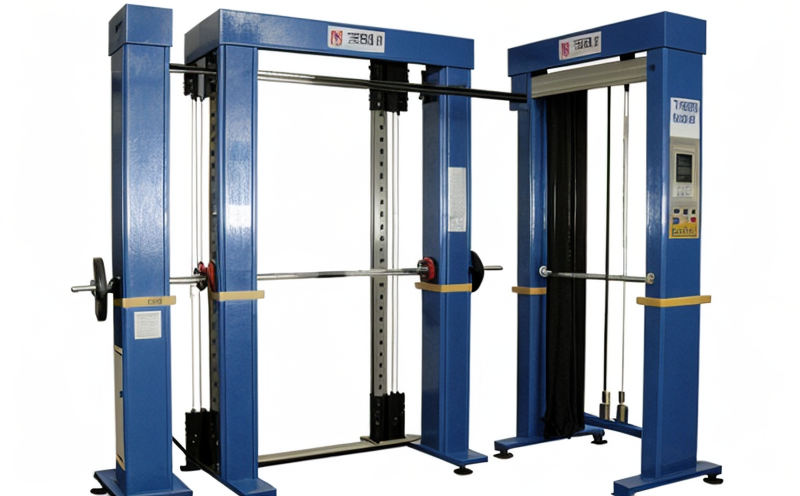ASTM D3787 Bursting strength of textile fabrics Ball burst method
The ASTM D3787 standard provides a precise and standardized procedure to measure the burst strength of woven, knitted, or non-woven fabrics. This test is particularly useful for evaluating the resistance to localized puncture and tearing, which are critical factors in determining the durability and performance of textile materials.
Bursting strength testing simulates real-world conditions where a fabric may be subjected to sudden pressure from an object, such as a sharp tool or impact. The test measures how much force is required to cause the fabric to burst under controlled conditions using a ball-loaded plunger that applies increasing pressure until failure occurs.
The method described in ASTM D3787 specifies the use of a ball burst tester with a defined nominal diameter and weight, which is lowered onto the specimen at a constant rate. The force applied by the ball is measured and recorded as it continues to compress the fabric until it fails. This provides critical insights into the material's integrity and tear resistance.
The test parameters for ASTM D3787 include several key variables that must be carefully controlled to ensure accurate results:
- Ball diameter: Typically 12 mm or 19 mm, depending on the fabric type
- Load rate: 5 kN/s ± 10%
- Test specimen size: Circular specimens with a diameter of (63.5 ± 1.5) mm and an area of approximately 124 cm²
- Environmental conditions: Temperature, humidity, and atmospheric pressure must be controlled to ensure consistent results.
The test involves several steps:
- Selecting the appropriate specimen size and shape as per ASTM D3787 specifications.
- Mounting the specimen on the testing machine with a preload of 2 N ± 0.15 N to ensure it is in contact with the ball.
- Lowering the ball onto the center of the specimen at a constant rate until failure occurs.
- Recording the force required to cause the fabric to burst, which represents its burst strength.
The burst strength is reported as the maximum load (in Newtons) that causes the fabric to fail. This value provides valuable information about the material's ability to withstand localized pressure and tearing forces.
Understanding the burst strength of a textile material is essential in various sectors, including automotive, footwear, medical devices, and industrial textiles. Automotive manufacturers use this test to ensure seat cushions can withstand impact without tearing, while footwear companies rely on it to assess sole durability. Medical device firms apply this method to evaluate packaging integrity for sterile products.
The burst strength test is also crucial in the textile industry itself, helping fabric producers identify areas of improvement in their materials and processes. By conducting rigorous testing per ASTM D3787 standards, manufacturers can ensure that their fabrics meet stringent quality requirements and perform consistently under real-world conditions.
Industry Applications
Bursting strength tests are widely used across multiple industries to assess the durability of materials. Some key applications include:
- Automotive Industry: Ensuring seat cushions and other components can withstand impact without tearing.
- Footwear Industry: Evaluating sole durability and ensuring shoes can handle high-pressure impacts.
- Medical Devices: Assessing the integrity of packaging materials used for sterile products to prevent contamination.
- Industrial Textiles: Determining the strength of fabrics used in construction, mining, and other demanding environments.
In each case, ASTM D3787 provides a reliable method to quantify how well a fabric can withstand localized pressure, making it an indispensable tool for quality assurance and product development.
Competitive Advantage and Market Impact
- Enhanced Product Performance: By identifying weak points in the material through ASTM D3787 testing, manufacturers can improve their products' overall performance.
- Regulatory Compliance: Adhering to international standards ensures that products meet safety and quality requirements, thus reducing the risk of non-compliance issues.
- Increased Market Share: Superior product quality leads to higher customer satisfaction and loyalty, which can translate into increased market share.
- Innovation: Continuous testing with ASTM D3787 encourages ongoing improvements in material science and manufacturing processes.
The ability to accurately measure burst strength provides a competitive edge by ensuring that products are reliable and safe. This, in turn, enhances brand reputation and fosters customer trust, driving market success.
Use Cases and Application Examples
Bursting strength testing is integral to various use cases across different sectors:
- Automotive Seat Cushions: Ensuring that seat cushions can withstand the impact of a person sitting on them without tearing or deforming.
- Footwear Soles: Evaluating the durability and tear resistance of soles to ensure they can handle high-pressure impacts during use.
- Medical Packaging: Assessing the integrity of packaging materials used for sterile medical devices to prevent contamination and ensure product safety.
- Industrial Textiles: Determining the strength of fabrics used in construction, mining, and other demanding environments where durability is critical.
In each case, ASTM D3787 provides a reliable method to quantify how well a fabric can withstand localized pressure. This ensures that products are not only safe but also meet stringent quality standards, contributing to their overall performance and reliability in real-world applications.





